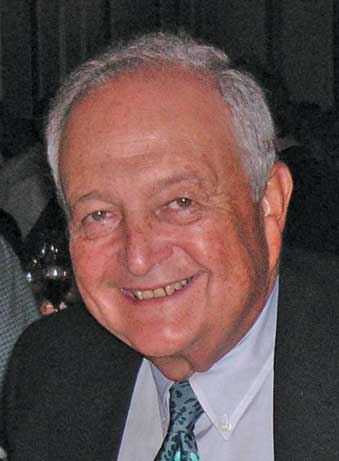 Robert
Goldblum received his BSEE and MS in Engineering Science degrees
from Pennsylvania State University. Upon graduation, he became
a member of the IRE and later the IEEE. He is now a Life Fellow
of the IEEE and EMC Society. Bob served as the Editor of the EMCS
Newsletter for 30 years, and served as an elected Board member
for eight years. He was the Chairman of the 1970 EMCS Symposium
held in Philadelphia and has served on other symposium committees.
His IEEE and EMCS awards are many. Before attending college, Bob
spent four years as an enlisted man in the United States Air Force.
After receiving his BSEE, he worked for Sylvania Electronics in
Waltham MA, AEL Inc. in Colmar, PA, General Electric Co. Valley
Forge Space Technology Center, and for the GE Re-entry Systems
Division in Philadelphia, PA. All work was in the area of EMC.
Bob founded ITEM (Interference Technology Engineers Master) in
1971, which is published today as Interference Technology. After
leaving GE, he founded R & B Enterprises, ROBAR Industries,
Inc, and The EMC Science Center, all headquartered in W. Conshohocken,
PA. These operations included the publishing company, an extensive
EMC test facility, training center, and government support services
with additional facilities at Crystal City, VA, Patuxent River,
VA, and the San Diego, CA Navy Centers. Mr. Goldblum served on
the committees to update M/S-461/2/3 and participated in bringing
the Army, Navy, and Air Force representatives together for this
effort. He created training courses on M/S – 461 and other
government regulations and personally taught thousands of government
and non-government personnel in various aspects of E3 and EMC.
Bob was personally involved in the development of EMP/lightning
test methods contained in M/S-461, the development of EMP Test
Equipment, the concept and editing of the DoD E3 Newsletter, and
the development of the well-known video, The Silent Threat, among
others. Bob created the 5-day PRAXIS, which involved half day
lectures and half day hands-on laboratory instruction. On behalf
of the US Navy, Bob supported their delegation to NATO by attending
various working groups on EMC and made numerous presentations
on technical subjects. Bob has been published extensively, and
he has written over 100 articles for ITEM and other trade magazines.
He has been invited as a guest lecturer at the first EMC Conference
held in Bangalore, India, at the Society of Old Crows in Tokyo,
Japan, and at the first EMC Society Symposium held in Haifa, Israel.
Bob has given a number of papers and presentations at IEEE Symposia
and other EMC conferences. Bob Goldblum’s desire to once
again join the EMCS BoD is to help the Society to become more
streamlined and responsive to the membership and to provide responsive
leadership to fulfill organizational and member needs.
Robert
Goldblum received his BSEE and MS in Engineering Science degrees
from Pennsylvania State University. Upon graduation, he became
a member of the IRE and later the IEEE. He is now a Life Fellow
of the IEEE and EMC Society. Bob served as the Editor of the EMCS
Newsletter for 30 years, and served as an elected Board member
for eight years. He was the Chairman of the 1970 EMCS Symposium
held in Philadelphia and has served on other symposium committees.
His IEEE and EMCS awards are many. Before attending college, Bob
spent four years as an enlisted man in the United States Air Force.
After receiving his BSEE, he worked for Sylvania Electronics in
Waltham MA, AEL Inc. in Colmar, PA, General Electric Co. Valley
Forge Space Technology Center, and for the GE Re-entry Systems
Division in Philadelphia, PA. All work was in the area of EMC.
Bob founded ITEM (Interference Technology Engineers Master) in
1971, which is published today as Interference Technology. After
leaving GE, he founded R & B Enterprises, ROBAR Industries,
Inc, and The EMC Science Center, all headquartered in W. Conshohocken,
PA. These operations included the publishing company, an extensive
EMC test facility, training center, and government support services
with additional facilities at Crystal City, VA, Patuxent River,
VA, and the San Diego, CA Navy Centers. Mr. Goldblum served on
the committees to update M/S-461/2/3 and participated in bringing
the Army, Navy, and Air Force representatives together for this
effort. He created training courses on M/S – 461 and other
government regulations and personally taught thousands of government
and non-government personnel in various aspects of E3 and EMC.
Bob was personally involved in the development of EMP/lightning
test methods contained in M/S-461, the development of EMP Test
Equipment, the concept and editing of the DoD E3 Newsletter, and
the development of the well-known video, The Silent Threat, among
others. Bob created the 5-day PRAXIS, which involved half day
lectures and half day hands-on laboratory instruction. On behalf
of the US Navy, Bob supported their delegation to NATO by attending
various working groups on EMC and made numerous presentations
on technical subjects. Bob has been published extensively, and
he has written over 100 articles for ITEM and other trade magazines.
He has been invited as a guest lecturer at the first EMC Conference
held in Bangalore, India, at the Society of Old Crows in Tokyo,
Japan, and at the first EMC Society Symposium held in Haifa, Israel.
Bob has given a number of papers and presentations at IEEE Symposia
and other EMC conferences. Bob Goldblum’s desire to once
again join the EMCS BoD is to help the Society to become more
streamlined and responsive to the membership and to provide responsive
leadership to fulfill organizational and member needs.
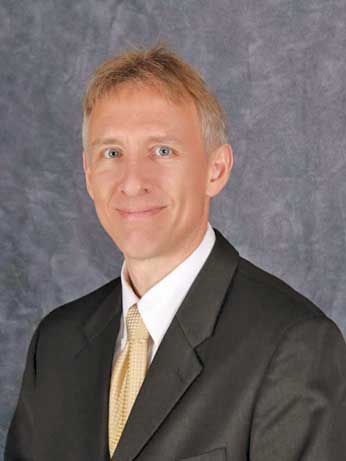 Todd
H. Hubing (S’82-M’82-SM’93-F’06) is the
Michelin Professor of Vehicular Electronics at Clemson University
in Clemson, SC. He received his BSEE degree from the Massachusetts
Institute of Technology in 1980, his MSEE from Purdue University
in 1982 and his Ph.D. from North Carolina State University in
1988. From 1982 to 1989, he was an EMC engineer with the IBM Communications
Products Division in Research Triangle Park, NC. In 1989, he decided
that he wanted to spend less time putting out fires and more time
understanding the fundamental sources of EMC problems, so he went
to the University of Missouri-Rolla where he worked with other
faculty and students to establish the UMR EMC Laboratory. Recently,
he was given the opportunity to participate in the establishment
of a new laboratory at Clemson University. The new lab will focus
on research in automotive and aerospace vehicular electronics
where electromagnetic compatibility issues play a key role. Dr.
Hubing is an active member of the IEEE EMC Society. He has served
as an associate editor of the Transactions on EMC, Distinguished
Lecturer, Technical Activities Committee Chair, Vice President
for Member Services and President. However, most people remember
him as the guy who used to write the Chapter Chatter column in
the EMC Newsletter.
Todd
H. Hubing (S’82-M’82-SM’93-F’06) is the
Michelin Professor of Vehicular Electronics at Clemson University
in Clemson, SC. He received his BSEE degree from the Massachusetts
Institute of Technology in 1980, his MSEE from Purdue University
in 1982 and his Ph.D. from North Carolina State University in
1988. From 1982 to 1989, he was an EMC engineer with the IBM Communications
Products Division in Research Triangle Park, NC. In 1989, he decided
that he wanted to spend less time putting out fires and more time
understanding the fundamental sources of EMC problems, so he went
to the University of Missouri-Rolla where he worked with other
faculty and students to establish the UMR EMC Laboratory. Recently,
he was given the opportunity to participate in the establishment
of a new laboratory at Clemson University. The new lab will focus
on research in automotive and aerospace vehicular electronics
where electromagnetic compatibility issues play a key role. Dr.
Hubing is an active member of the IEEE EMC Society. He has served
as an associate editor of the Transactions on EMC, Distinguished
Lecturer, Technical Activities Committee Chair, Vice President
for Member Services and President. However, most people remember
him as the guy who used to write the Chapter Chatter column in
the EMC Newsletter.
 Bob
Scully has been serving as the Johnson Space Center Electromagnetics
Compatibility Group Lead Engineer since June 2000. In that role,
he is currently supporting multiple programs, including the Space
Shuttle and Space Station, and is serving as Co-Chair of the Space
Shuttle Electromagnetic Environmental Effects (E3) Control Panel.
Mr. Scully has a Master’s degree in Electrical Engineering
from the University of Texas at Arlington, and is dissertation
only towards a PhD in Electrical Engineering, also from the University
of Texas at Arlington. Mr. Scully is a registered Texas Professional
Engineer, and holds a National Association of Radio and Telecommunications
Engineers (NARTE) Certification as an Electromagnetic Compatibility
Engineer. He has completed an Electromagnetic Compatibility Certification
Program with the University of Missouri Rolla. Within the EMC
Society, Mr. Scully is currently serving as a Member of the Board
of Directors, and is Chair of Technical Committee 4 (Electromagnetic
Interference Control Technology), Vice Chair to Technical Committee
1 (EMC Management), and Secretary to the Technical Advisory Committee.
Mr. Scully has over 20 years in military and commercial aviation
electrical and electronics engineering, as well as electromagnetic
compatibility. Mr. Scully and his wife of 32 years, Elizabeth,
have two children. Both are currently serving proudly in the US
Army. Donovan is an NCO in Special Forces. Gayla is a Lieutenant
in Military Counterintelligence.
Bob
Scully has been serving as the Johnson Space Center Electromagnetics
Compatibility Group Lead Engineer since June 2000. In that role,
he is currently supporting multiple programs, including the Space
Shuttle and Space Station, and is serving as Co-Chair of the Space
Shuttle Electromagnetic Environmental Effects (E3) Control Panel.
Mr. Scully has a Master’s degree in Electrical Engineering
from the University of Texas at Arlington, and is dissertation
only towards a PhD in Electrical Engineering, also from the University
of Texas at Arlington. Mr. Scully is a registered Texas Professional
Engineer, and holds a National Association of Radio and Telecommunications
Engineers (NARTE) Certification as an Electromagnetic Compatibility
Engineer. He has completed an Electromagnetic Compatibility Certification
Program with the University of Missouri Rolla. Within the EMC
Society, Mr. Scully is currently serving as a Member of the Board
of Directors, and is Chair of Technical Committee 4 (Electromagnetic
Interference Control Technology), Vice Chair to Technical Committee
1 (EMC Management), and Secretary to the Technical Advisory Committee.
Mr. Scully has over 20 years in military and commercial aviation
electrical and electronics engineering, as well as electromagnetic
compatibility. Mr. Scully and his wife of 32 years, Elizabeth,
have two children. Both are currently serving proudly in the US
Army. Donovan is an NCO in Special Forces. Gayla is a Lieutenant
in Military Counterintelligence.
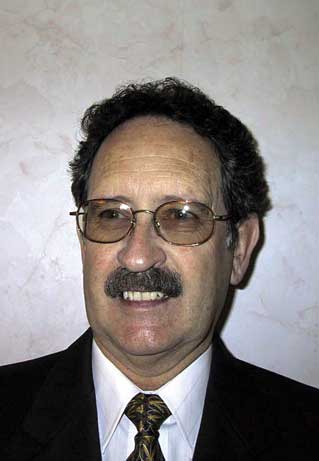 David
Staggs (S’70-M’70-SM’84) is the former Director
of Regulatory Compliance, Dell Computer Corporation, in Austin,
Texas. He has a BS in Electrical Engineering from Texas Tech University.
He is a Registered Professional Engineer in Texas. He is a NARTE
Certified EMC Engineer and Vice Chair of the dB Society. David
Staggs’ background includes over 30 years of Regulatory
Compliance experience with Texas Instruments, Xerox, EMCO, Dell
Computer, and as a consultant to corporations throughout the United
States. Mr. Staggs is a Senior Member of the Institute of Electrical
and Electronic Engineers (IEEE), and is currently a member of
the IEEE EMC Society’s Board of Directors, where he is serving
as Membership Chair and Public Relations Chair. He was a member
of the IEEE EMC Standards Board and was Awards Chair. He has been
Chairperson of the ANSI Accredited Standards Committee C63.4 Working
Group on Electrostatic Discharge from its inception until publication
as ANSI C63.16 -1993. He has previously chaired standards committees
concerned with Grounding and LISN verification. He is a past Chairperson
of the Central Texas EMC Society Chapter. He has written, published,
and presented numerous papers for the IEEE Electromagnetic Compatibility
Symposiums and industry publications. He is a NARTE certified
EMC Engineer. He was a member of the Industry Advisory Board for
the College of Electrical Engineering at Texas Tech University.
Since 1985, he has been on contract to the U.S. Department of
Commerce, National Institute of Standards and Technology (NIST)/National
Voluntary Laboratory Accreditation (NVLAP) program for EMC Test
Laboratories as an EMC Assessor
David
Staggs (S’70-M’70-SM’84) is the former Director
of Regulatory Compliance, Dell Computer Corporation, in Austin,
Texas. He has a BS in Electrical Engineering from Texas Tech University.
He is a Registered Professional Engineer in Texas. He is a NARTE
Certified EMC Engineer and Vice Chair of the dB Society. David
Staggs’ background includes over 30 years of Regulatory
Compliance experience with Texas Instruments, Xerox, EMCO, Dell
Computer, and as a consultant to corporations throughout the United
States. Mr. Staggs is a Senior Member of the Institute of Electrical
and Electronic Engineers (IEEE), and is currently a member of
the IEEE EMC Society’s Board of Directors, where he is serving
as Membership Chair and Public Relations Chair. He was a member
of the IEEE EMC Standards Board and was Awards Chair. He has been
Chairperson of the ANSI Accredited Standards Committee C63.4 Working
Group on Electrostatic Discharge from its inception until publication
as ANSI C63.16 -1993. He has previously chaired standards committees
concerned with Grounding and LISN verification. He is a past Chairperson
of the Central Texas EMC Society Chapter. He has written, published,
and presented numerous papers for the IEEE Electromagnetic Compatibility
Symposiums and industry publications. He is a NARTE certified
EMC Engineer. He was a member of the Industry Advisory Board for
the College of Electrical Engineering at Texas Tech University.
Since 1985, he has been on contract to the U.S. Department of
Commerce, National Institute of Standards and Technology (NIST)/National
Voluntary Laboratory Accreditation (NVLAP) program for EMC Test
Laboratories as an EMC Assessor
.
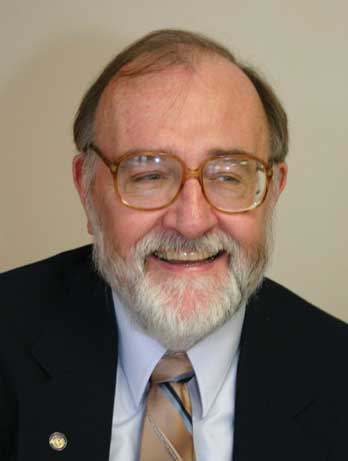 Donald
Sweeney, Senior EMC Engineer (NARTE Certificate Numbers EMC-001209-NE
& EMC-001210-NT) is president of D.L.S. Electronic Systems,
Inc. He is a graduate of the department of electrical engineering,
University of Illinois at Urbana and has over 40 years experience
in the electrical engineering field. Most of his time has been
devoted to solving problems in electromagnetic engineering and
closely related disciplines. He has worked for Extel Corporation,
Teletype Corporation, Gates Radio, and Collins Radio prior to
forming D.L.S. Electronic Systems, Inc.; a Wheeling, Illinois
based company. He specializes in EMC, RFI & EMI consulting
and testing. Don has taught at Oakton College and at the University
of Wisconsin (at both the Madison and Milwaukee campuses), and
consults nation-wide on electromagnetic compatibility. His company
offers a class on EMC design developed over 20 years and he has
taught these to more than 2,500 engineers. He has served as a
special consultant to Lawrence Livermore National Laboratory and
the Nuclear Regulatory Commission. He is the founding chairman
of the U.S. Council of EMC Laboratories and a NARTE certified
EMC Engineer. He is a senior member of the IEEE, past Chicago
area Chapter Chairman of the IEEE EMC Society and has served eight
years on the Board of Directors of the IEEE EMC Society. He serves
on the IEEE EMC Standards Development Committee (SDCom), P299
Shielding, and P1688 Module Electromagnetic Interference (EMI)
Testing. He also serves as an Angel to the Chicago and Milwaukee
IEEE EMC Chapters. As a member of the Board, he believes he presents
an independent viewpoint. As a small business owner, he is concerned
about cost.
Donald
Sweeney, Senior EMC Engineer (NARTE Certificate Numbers EMC-001209-NE
& EMC-001210-NT) is president of D.L.S. Electronic Systems,
Inc. He is a graduate of the department of electrical engineering,
University of Illinois at Urbana and has over 40 years experience
in the electrical engineering field. Most of his time has been
devoted to solving problems in electromagnetic engineering and
closely related disciplines. He has worked for Extel Corporation,
Teletype Corporation, Gates Radio, and Collins Radio prior to
forming D.L.S. Electronic Systems, Inc.; a Wheeling, Illinois
based company. He specializes in EMC, RFI & EMI consulting
and testing. Don has taught at Oakton College and at the University
of Wisconsin (at both the Madison and Milwaukee campuses), and
consults nation-wide on electromagnetic compatibility. His company
offers a class on EMC design developed over 20 years and he has
taught these to more than 2,500 engineers. He has served as a
special consultant to Lawrence Livermore National Laboratory and
the Nuclear Regulatory Commission. He is the founding chairman
of the U.S. Council of EMC Laboratories and a NARTE certified
EMC Engineer. He is a senior member of the IEEE, past Chicago
area Chapter Chairman of the IEEE EMC Society and has served eight
years on the Board of Directors of the IEEE EMC Society. He serves
on the IEEE EMC Standards Development Committee (SDCom), P299
Shielding, and P1688 Module Electromagnetic Interference (EMI)
Testing. He also serves as an Angel to the Chicago and Milwaukee
IEEE EMC Chapters. As a member of the Board, he believes he presents
an independent viewpoint. As a small business owner, he is concerned
about cost.
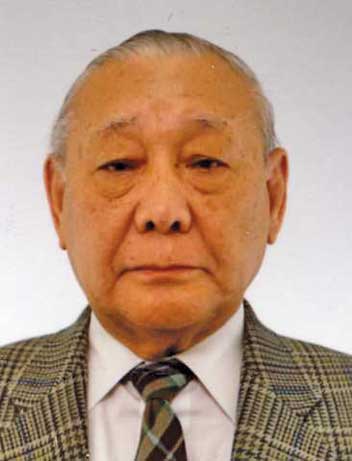 Takeo
Yoshino was born in 1929, in Tokyo, Japan. He received the B.E.
degree in 1953 from the University of Electro-Communications (UEC),
Tokyo, Japan. Since 1953, he has been a Researcher at the Department
of Electronic Engineering of the UEC, and in 1973 was appointed
Professor of the same Department of UEC, and since 1970 he has
been the Director of UEC Sugadaira Space Radio Observatory until
his retirement of 1997. After his retirement from UEC in 1997,
he moved to the Fukui University of Technology as a chief professor
until 2003. Since 2003, he returned to UEC as an Emeritus Professor
of the UEC Historical Museum. From 1958 to 1960, he stayed at
Syowa Station in Antarctica as a wintering party member of the
third Japanese Antarctic Research Expedition (JARE), and from
1975 to 1977, he was at Syowa station again as the leader of the
17th Expedition. In Antarctica, his main field of interest was
the investigation of the polar geophysical phenomena by the natural
electromagnetic wave emissions observed by ground, rockets and
satellites. He published many papers on the research results about
natural radio wave emissions at polar and space regions by the
satellite data and the burst VLBI system observation in millimeters
and Terra-hertz bands radio astronomy. In addition, his interests
fields extended to phenomena of the background radio noise increase
related by earthquake and volcanic eruptions, and the rejection
of EMC interference in the on-board circuits of satellite and
rockets. He received the IEEE AP Best Paper Award in 1967, and
the Distinguished Service Award on EMC from the Polish EMC Symposium
in 1992 and 2000 respectively, and from EMC-J of IEICE, Japan
in 2002. Also he received from the IEEE EMC Society the Certificate
of Acknowledgement in 1999, the Certificate of Achievement in
2000, the Electromagnetic Compatibility Society Honorary Life
Member Award in 2001, and the Certificate of Appreciation in 2004.
Professor Yoshino is a member of the IEICE (Japan), honorary Life
Member of the IEEE, EMC Society, Life member of IEEE, AGU, URSI,
IAGA and COSPAR, as well as an advisory board member of the Zurich
EMC Symposium, Wroclaw EMC Symposium, Lowell Observatory, and
IEEE EMCS Tokyo Chapter (1991 to 95). From 1998 to 2003, he was
elected to the IEEE EMC Society Board of Directors where he served
as chair of the Region 10 membership service committee. EMC
Takeo
Yoshino was born in 1929, in Tokyo, Japan. He received the B.E.
degree in 1953 from the University of Electro-Communications (UEC),
Tokyo, Japan. Since 1953, he has been a Researcher at the Department
of Electronic Engineering of the UEC, and in 1973 was appointed
Professor of the same Department of UEC, and since 1970 he has
been the Director of UEC Sugadaira Space Radio Observatory until
his retirement of 1997. After his retirement from UEC in 1997,
he moved to the Fukui University of Technology as a chief professor
until 2003. Since 2003, he returned to UEC as an Emeritus Professor
of the UEC Historical Museum. From 1958 to 1960, he stayed at
Syowa Station in Antarctica as a wintering party member of the
third Japanese Antarctic Research Expedition (JARE), and from
1975 to 1977, he was at Syowa station again as the leader of the
17th Expedition. In Antarctica, his main field of interest was
the investigation of the polar geophysical phenomena by the natural
electromagnetic wave emissions observed by ground, rockets and
satellites. He published many papers on the research results about
natural radio wave emissions at polar and space regions by the
satellite data and the burst VLBI system observation in millimeters
and Terra-hertz bands radio astronomy. In addition, his interests
fields extended to phenomena of the background radio noise increase
related by earthquake and volcanic eruptions, and the rejection
of EMC interference in the on-board circuits of satellite and
rockets. He received the IEEE AP Best Paper Award in 1967, and
the Distinguished Service Award on EMC from the Polish EMC Symposium
in 1992 and 2000 respectively, and from EMC-J of IEICE, Japan
in 2002. Also he received from the IEEE EMC Society the Certificate
of Acknowledgement in 1999, the Certificate of Achievement in
2000, the Electromagnetic Compatibility Society Honorary Life
Member Award in 2001, and the Certificate of Appreciation in 2004.
Professor Yoshino is a member of the IEICE (Japan), honorary Life
Member of the IEEE, EMC Society, Life member of IEEE, AGU, URSI,
IAGA and COSPAR, as well as an advisory board member of the Zurich
EMC Symposium, Wroclaw EMC Symposium, Lowell Observatory, and
IEEE EMCS Tokyo Chapter (1991 to 95). From 1998 to 2003, he was
elected to the IEEE EMC Society Board of Directors where he served
as chair of the Region 10 membership service committee. EMC